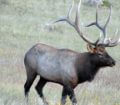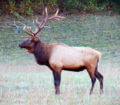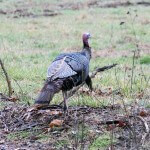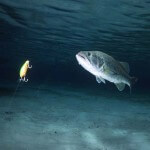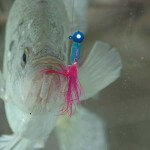Editor’s Note: When I think about elk and elk hunting, the first person I think of is Wayne Carlton of Montrose, Colorado. Wayne and I have been friends more than 30 years, and he’s built calls for 33 years with his latest, the Native by Carlton calls and hunting accessories available at http://www.nativebycarlton.com/. We’ve hunted turkey, deer and elk together. Wayne has been on TV shows and featured in videos, and he’s one of the most well-known elk hunters and elk guides in the nation. Wayne Carlton plays a very-active role in the Rocky Mountain Elk Foundation (RMEF) https://www.rmef.org/. I asked Wayne, “Why do you always call after the shot?”
As I’ve mentioned, I’m convinced that calling to an elk after the shot, getting another arrow on the string and putting it in the elk works for all types of critters. Once I took a world-record moose. Then the next year I killed another bull moose that was the 76th best moose ever killed with a bow. I shot the world-record moose at 29 yards with my bow, and I shot the second moose at 9 yards. When I was at full draw on the second moose, I couldn’t use my pin sight on my bow, because all I could see was hair. He took one step forward, and I gave a cow moose call and released my arrow. After he took the arrow, I gave a second cow moose call, and he stood there for a full 60 seconds. Then he went down and never moved again.
 I shot one big elk in New Mexico and immediately gave a cow call as I watched him run off. He turned around and came right back on the other side of the tree from where I’d shot him. However, I was so busy watching that big elk that I forgot to put an arrow on the string of my bow to take a second shot. That bull scored 397-7/8.
I shot one big elk in New Mexico and immediately gave a cow call as I watched him run off. He turned around and came right back on the other side of the tree from where I’d shot him. However, I was so busy watching that big elk that I forgot to put an arrow on the string of my bow to take a second shot. That bull scored 397-7/8.
I’ve also seen that you can call wild turkeys back after a shot, especially in places where those turkeys haven’t been heavily hunted. I took two ladies turkey hunting and called in a big, ole gobbler, and told them, “Ladies, commence firing.” The wind was blowing so hard that day that both ladies missed the gobbler. However, the wind also provided an advantage of their getting second shots. The wind not only blew those pellets away from the turkey’s head, but the wind was blowing so hard that it blew the sound of those shotguns’ reporting away from the turkey’s hearing. So, the tom didn’t know from which direction the shots had come.
 That gobbler started walking up a hill, although I had started calling to that turkey as soon as they shot. The turkey wasn’t running – he was fast walking. I continued to call and got the bird within gun range again, and they missed the second time. However, this time, that ole bird wised-up to what was happening and may have left the country for all I know. Although both ladies’ husbands had taken them out to help them pattern their shotguns, I think both ladies were so excited about looking at the turkey that they forgot to look at the beads on the ends of their shotguns before they squeezed their triggers. I’ve been able to call turkeys back after shooting at them several different times by calling as soon as a shotgun reports.
That gobbler started walking up a hill, although I had started calling to that turkey as soon as they shot. The turkey wasn’t running – he was fast walking. I continued to call and got the bird within gun range again, and they missed the second time. However, this time, that ole bird wised-up to what was happening and may have left the country for all I know. Although both ladies’ husbands had taken them out to help them pattern their shotguns, I think both ladies were so excited about looking at the turkey that they forgot to look at the beads on the ends of their shotguns before they squeezed their triggers. I’ve been able to call turkeys back after shooting at them several different times by calling as soon as a shotgun reports.
Calling after the shot doesn’t always work. But neither does anything else in hunting always work. However, calling after the shot has worked so many times for me on so many different animals that I’ve tried to train myself to always call after the shot, regardless of the animal I’m hunting.
 Something else that may happen I’ve noticed is if more than one gobbler comes in at a time and is shot, and you’re hunting with a buddy and start aggressively calling, the toms may run off a little ways but then return and jump on the turkey that’s been shot. You or your hunting buddy, depending on the laws in that state, can take a second shot and take a second gobbler.
Something else that may happen I’ve noticed is if more than one gobbler comes in at a time and is shot, and you’re hunting with a buddy and start aggressively calling, the toms may run off a little ways but then return and jump on the turkey that’s been shot. You or your hunting buddy, depending on the laws in that state, can take a second shot and take a second gobbler.
I believe you can accomplish the same thing, if you start calling or rattling deer after the shot. I have a home in Edgefield, South Carolina, and within 300 yards of my back porch, I once had three bucks come in at the same time. The smallest buck of the three started raking a tree with his antlers. I took a shot at the biggest buck, and I wasn’t shooting very well that day. I shot under the big buck. I began calling immediately after the shot, the buck stood still, and I took that buck on the second shot.
 As I’ve grown older, I really enjoy the hunts much more than I did in my younger days when my only thoughts were about taking the animals. I’ve learned much more when I’ve been guiding and watching what’s happening during a hunt when I call. Let’s face the fact that after you’ve shot, you have nothing to lose by calling to the animal you’ve just called in, and if it works, you may get a second shot and success even after you’ve failed initially.
As I’ve grown older, I really enjoy the hunts much more than I did in my younger days when my only thoughts were about taking the animals. I’ve learned much more when I’ve been guiding and watching what’s happening during a hunt when I call. Let’s face the fact that after you’ve shot, you have nothing to lose by calling to the animal you’ve just called in, and if it works, you may get a second shot and success even after you’ve failed initially.
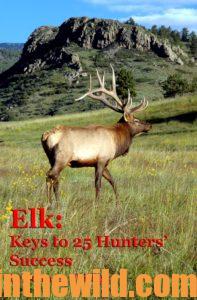 You can read John E. Phillips’ latest book on hunting elk, “Elk – Keys to 25 Hunters’ Success” and learn more at https://www.amazon.com/Elk-Keys-25-Hunters-Success-ebook/dp/B07F3CNTX2 for Kindle and print books versions. You can download a free app to enable you to read this book on your computer or your tablet. You also can download a free book, “Miz Denise’s Outdoor Cooking – More than 35 Recipes for Elk and Mule Deer,” at https://www.emailmeform.com/builder/form/rtJ6fD5m97CYhMXd.
You can read John E. Phillips’ latest book on hunting elk, “Elk – Keys to 25 Hunters’ Success” and learn more at https://www.amazon.com/Elk-Keys-25-Hunters-Success-ebook/dp/B07F3CNTX2 for Kindle and print books versions. You can download a free app to enable you to read this book on your computer or your tablet. You also can download a free book, “Miz Denise’s Outdoor Cooking – More than 35 Recipes for Elk and Mule Deer,” at https://www.emailmeform.com/builder/form/rtJ6fD5m97CYhMXd.

